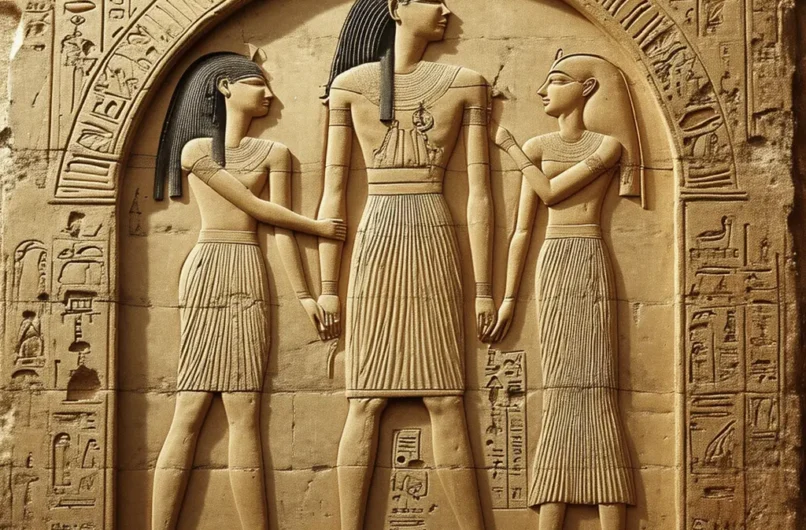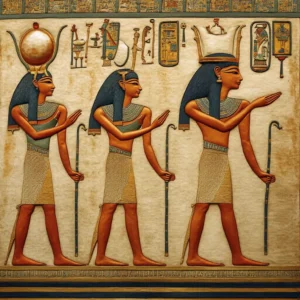
The Old Kingdom: Age of the Pyramids
The Old Kingdom, often referred to as the “Age of the Pyramids,” is a significant period in the timeline about ancient Egypt. This era, spanning from around 2686 to 2181 BC, saw the construction of the most iconic structures in Egypt—pyramids. The Old Kingdom represents the peak of Egypt’s early development and the establishment of a centralized monarchy. In this article, we will explore this fascinating period and the significant achievements that took place. Alongside the timeline, we will also touch on fun facts about Christmas in Egypt, 10 interesting facts about Egypt, and even some unusual facts about Egypt to add a bit of trivia to our historical journey.
The Rise of the Pharaohs
The Old Kingdom began with the Third Dynasty when Pharaoh Djoser came to power. One of the first significant architectural developments of this era in the timeline about ancient Egypt was the construction of the Step Pyramid at Saqqara, which was the world’s first large-scale stone structure. This monument, designed by the brilliant architect Imhotep, set the stage for future pyramid construction.
During this period in the timeline about ancient Egypt, the pharaohs were considered divine rulers, believed to be living gods on earth. The kings of Egypt wielded immense power and controlled vast resources, enabling them to commission monumental projects such as the pyramids. Interestingly, while these grand structures were being built, many 10 interesting facts about Egypt surfaced, including how skilled laborers, not slaves, were the ones who constructed these monumental buildings.
The Pyramid Builders
Perhaps the most famous pyramids of the Old Kingdom are those found on the Giza Plateau. Pharaohs Khufu, Khafre, and Menkaure are responsible for these extraordinary structures, which have become synonymous with the greatness of ancient Egypt. In the timeline about ancient Egypt, the Great Pyramid of Giza, built for Pharaoh Khufu, remains one of the Seven Wonders of the Ancient World.
Throughout this phase of the timeline about ancient Egypt, the pyramids symbolized the pharaohs’ connection to the gods and their belief in the afterlife. These monumental tombs were not just burial sites; they were a gateway for the king’s soul to ascend to the heavens. The sheer scale of these projects demonstrates the sophistication of Egyptian engineering and the immense resources they had at their disposal. For those interested in Egyptian culture today, there are many documentary films about Egypt that explore the significance of the pyramids and their legacy.
Society and Religion in the Old Kingdom
Religion played a central role during the Old Kingdom. Egyptians worshiped a vast pantheon of gods, and the pharaoh was seen as the intermediary between the gods and the people. This divine kingship reinforced the ruler’s absolute authority. The pyramids, temples, and various religious ceremonies all highlight the importance of religious life during this period in the timeline about ancient Egypt.
The Old Kingdom also witnessed the growth of a complex society with an organized workforce, skilled craftsmen, and agricultural abundance. Agriculture was the backbone of the economy, and the Nile River’s predictable flooding ensured that the land was fertile and prosperous. In the timeline about ancient Egypt, the rich culture of this era continues to intrigue historians and tourists alike, with 100 facts about ancient Egypt often highlighting the achievements of this golden age.
Fun and Unusual Facts
While most people associate the Old Kingdom with the pyramids, there are many unusual facts about Egypt from this period. In the timeline about ancient Egypt, Egyptians believed that their gods could take the form of animals, which is why animals such as cats and crocodiles were considered sacred. They even had a goddess, Bastet, who was depicted as a lioness and later as a domesticated cat.
On a lighter note, it’s fascinating to learn about modern Egyptian celebrations. In the timeline about ancient Egypt, did you know there are fun facts about Christmas in Egypt? Though Egypt is predominantly Muslim, the Coptic Christian population celebrates Christmas on January 7th, and the festive season brings a unique blend of traditions.
The Decline of the Old Kingdom
As time went on, the Old Kingdom began to weaken. A combination of factors, including economic decline, poor harvests, and the increasing power of local governors (nomarchs), contributed to the fall of centralized authority. The final blow came with the rise of regional rulers, marking the end of the Old Kingdom and the beginning of the First Intermediate Period.
This decline in the timeline about ancient Egypt was significant, as Egypt’s unity was fractured, and it would take several centuries before a strong central government would reemerge in the Middle Kingdom. However, the achievements of the Old Kingdom, particularly the pyramids, continue to captivate people across the globe. Travelers today can explore these ancient wonders through services like light Egypt travel or visit important historical sites like Luxor, home to some of Egypt’s most famous temples.
Lasting Legacy of the Old Kingdom
The Old Kingdom left a lasting legacy on the world. Its architectural achievements, advancements in governance, and religious beliefs laid the foundation for future generations. The pyramids, particularly the Great Pyramid of Giza, stand as a testament to the skill, ambition, and vision of the ancient Egyptians. This era in the timeline about ancient Egypt is often regarded as the most prosperous and creative period, setting the stage for later dynasties.
As visitors explore the pyramids and other ancient landmarks today, they are not just witnessing remnants of a past civilization but also the enduring legacy of human ingenuity. Many documentaries, like documentary films about Egypt, dive into the mysteries of these ancient structures, offering insights into how they were built and what they represented to the ancient Egyptians.
Modern Connections to Ancient Egypt
Even today, the influence of the Old Kingdom is evident in modern Egypt. Tourists flock to see the pyramids, while historians continue to study the intricate details of this fascinating civilization. The city of Luxor, with its grand temples and monuments, is another must-visit destination that offers a window into Egypt’s rich history.
For anyone looking to travel to Egypt, light Egypt travel can help organize trips to these ancient sites. Whether you’re planning a visit to the pyramids or want to explore the temples of Luxor, Egypt offers a wealth of experiences that connect visitors with the distant past. If you’re interested in learning more about Egypt or planning a trip, you can reach out to 01212007771 for more information on how to discover the wonders of Egypt.
Conclusion
The Old Kingdom, with its grand pyramids and divine kingship, represents a key chapter in the timeline about ancient Egypt. Its legacy is not only etched in stone but also in the cultural memory of humanity. From the pyramids of Giza to the intricate religious beliefs, this era continues to fascinate us thousands of years later. Whether through documentary films about Egypt, exploring 100 facts about ancient Egypt, or simply marveling at 10 interesting facts about Egypt, the Old Kingdom’s contributions to civilization remain unparalleled.
- March 16, 2025
- 293
- Uncategorized , Egypt Blog
- 0 comment




Add Comment